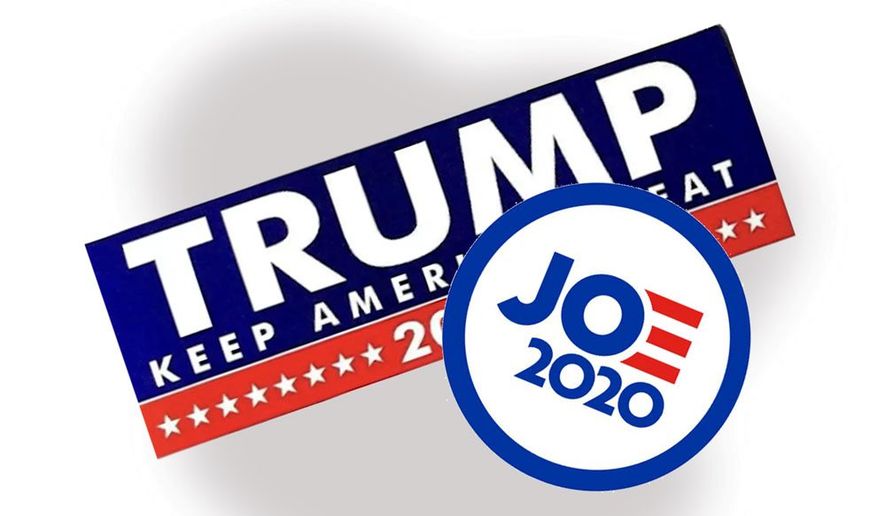OPINION:
Despite what you hear from some, the polling in the 2020 elections is very likely not broken, biased or wrong.
For the last few weeks, there has been a fairly steady drumbeat from some of the president’s allies that the polling on the election is wrong — it is over-representing Democrats, or Trump partisans are refusing to participate, or opinion researchers aren’t catching the advantage the president has with respect to intensity.
Probably all three are correct. None are material.
Are certain surveys over-representing Democrats? Yes. Surveys of all adults usually mean more Democrats. Surveys of registered voters will also over-represent Democrats, although to a lesser degree. Surveys of likely voters are generally closer to the mark. The bad news is that even among surveys of likely voters, President Trump currently trails former Vice President Joseph R. Biden by amounts outside the margin of error.
Are Trump partisans refusing to participate in surveys and thereby skewing the results? Maybe some are; no one can say for sure. If they were, one would expect to see it in responses to other survey questions like approval or favorability ratings, which have been remarkably consistent over the last four years. It’s important to examine a range of surveys and results across time. Ultimately, attitudes and sentiments peek through in all kinds of responses, not just those directly related to voting preferences.
Is there some intense wave of Trump voters that is as yet invisible? Maybe. Those who intend to vote for the president are definitely more intense than those who intend to vote for Mr. Biden. But those who intend to vote against Mr. Trump seem about as intense as those who intend to vote for him.
The campaign itself knows these results, considered broadly, are legitimate. Their placement of ad buys in places like Iowa and Ohio clearly show they know those places are competitive. The campaign has also asked for more debates, which is odd for an incumbent and indicates the same degree of competitiveness as do the survey results. Finally, and most obviously, the campaign has not released its own survey results, either directly or through reliable media conduits. If they were convinced other survey results were wrong, they would do that without hesitation.
The simple truth is that there has been a remarkable amount of stasis in the race. Mr. Biden’s average lead has been as small as 4 points (in January) and as big as 9 points (last week). In the six dozen or so nationwide surveys done in the last 4 months, Mr. Biden has led in all of them except for two, in which the president and he were tied.
With respect to favorability, the former vice president’s favorability ratings have been consistently in the middle, with a current average of net unfavorable of 1 point. The president’s have also been consistent on the downside; his current average is net unfavorable of 13 points. For purposes of comparison, Hillary Clinton’s ratings at this point in 2016 were net unfavorable by 13 points.
In short, this campaign is very similar to the 2016 election, in which two candidates who have been very well known to the voting public for decades are facing one another. The difference this time is that the president is facing a relatively popular opponent at a moment when much seems to be going wrong in the nation.
Time is growing short for the campaign to get itself organized, and relying on Mr. Biden to make some sort of fatal mistake seems at best lazy and at worst morbid. Keep in mind, this cake starts getting baked in late September when early voting begins in earnest.
If the president wants to get reelected which — in the wake of the ill-timed firing of the U.S. Attorney in the Southern District of New York, the listless performance in Tulsa and the continued stream of directionless tweets — seems like an open question, he has about 60 days to right the ship.
Ignoring the numbers won’t change that.
• Michael McKenna, a columnist for The Washington Times, is the president of MWR Strategies. He was most recently a deputy assistant to the president and deputy director of the Office of Legislative Affairs at the White House.




Please read our comment policy before commenting.